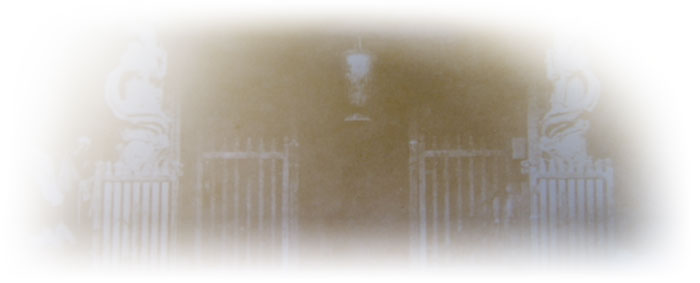 |
|
|
|
 |
Qing Dynasty-the Xinxing Temple in Mankah |
|
|
|
 |
| |
|
| |
| Qing Dynasty-the Xinxing Temple in Mankah |
| |
In 1736, the number of Han people increased who moved inthe Taipei Basin to reclaim. In 1738, people from the Sanyi( Jingjiang, Nanan and Huian ) raised funds to build the LungshanTemple in Mankah, and the construction was completed two years
later. Consecutively, the Old Street and XinDian Street ( nowSection 1, XiYuan Road ) to the north of the Lungshan Templewere developed. Yet, in 1746, at the intersection of HanZi Street( later transliterated into Mandarin as HuanCi Street, now Section
2, GueiYang Street), which was developed earlier than the OldStreet, Xinxing Temple was built, and became the center of urbandevelopment in the area that expanded toward the east and thenorth. In 1788, Qingsuiyen Zushih Temple was also built in the
neighborhood whereas Xinxing Temple was destroyed in a fire in
1813. After its reconstruction in 1825, these three temples were
referred to as〝Three Great Temples in Mankah.〞
According to literature records,〝Tianhou Temple...the one
at Mankah Pier by Tamsui River.... was built in Qianlong 11th Year..
...〞and〝Tianhou Temple.... The one on Mankah Street where the
old pier was located was built in Qianlong 11th Year.....〞Hence, it
is proved that the Mankah Xinxing Temple was built in 1746. It
was named Tianhou Temple for worshipping tianshang shengmu
( literally meaning : Holy Mother in Heaven ).
Opinions regarding the construction process of the temple
have been widely divided. According to an oral history from
previous temple authorities,〝About 200 years ago, a trade ship
arrived at Mankah. Upon arrival, the ship owner respectfully
moved the Mazu statue consecrated on the ship onshore for
worshipping. When the owner was done with the business part
of his visit and wanted to bring the deity onto the ship and sail
back home, everything went wrong. So, from his best guessing,
he believed that it was Mazu's will to stay onshore. Therefore, he
moved the deity with all due respect back onshore and left
Taiwan as he planned. When this incident was known to shipping
business runners in Mankah, they raised funds to build a temple
at the corner of HanZi Street in Xinxing District to worship Mazu.
This is the origin of Xinxing Temple. 〞Meanwhile, local seniors
indicated that since the urban development of Taipei originated
from Sinzhuang, the Mankah area at that time was still a newly
developed area ( Xinxing in Mandarin ). That was the reason why
people named it〝Xinxing Temple.〞Opinions are also divided as
for the origin of the deity consecrated in the Xinxing Temple: one
being that the deity was a double of the Mazu consecrated in the
Tianhou Temple in Sinjuang; another being that it was picked up
from a river. Which one is true? The absence of relevant records
makes it impossible to verify the truth today, but one thing is for
sure - the candles and incense in the Xinxing Temple have
continued to burn feverishly ever since for the efficacy of Mazu.
According to the construction drawing of Xinxing Temple
in the Taiwan Prefecture Reconstruction Chronicles, the temple
used to be spacious and magnificent, with balconies and platforms
for performances in the yard. At the center was the main hall for
consecrating the deity, while the two-doored main building behind
was for worshipping minor gods and goddesses. To the right, there
was the three-doored guanting ( main sitting room) surrounded by
walls. In addition, according to the survey reports completed
during the Japanese Colonization, the Xinxing Temple located in
Mankah District at that time dominated an area of about 160 pings
of land (an area measure equal to 3.3057 square meter or 36
square feet), including the area of temple buildings of about 127
pings and auxiliary property about 40 pings, indicating that the
Temple was well-established in the Qing Dynasty.
The temple was destroyed in a fire in 1813. After it was
reconstructed in 1825, the temple, the Longshan Temple and
Qingsuiyen Zushih Temple were referred to as〝Three Great
Temples in Mankah. 〞In 1895, Taiwan was ceded to Japan. When
the Second Sino-Japanese War broke out in 1937, the strategic
value of Taiwan became prominent. The Japanese promoted the
Kominka ( Japanization ) Movement, set up Japanese-speaking
families, and abolished all local temples to consecrate Japanese
deities. In 1943, the Japanese demolished the Xinxing Temple for
the construction of airraid roadwork, so the believers had no
choice but moved the deities and objects for consecration to the
rear hall of Lungshan Temple. Under the circumstances, Xinxing
Temple, the spiritual center of the Mankah area, was disintegrated
and temporarily became part of history.
|
 |
|
|



